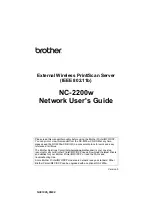
User Manual
Your TrustWorthy Industrial IoT Partner
www.pusr.com
55
3. Click on the Socket tab in this page, select Httpd Client in the working mode options.
4. The HTTPD method needs to fill in the correct URL path, and select the GET or POST method as needed.
5. Fill in the HTTPD request header as needed.
6. Fill in the HTTPD address, that is, the address of the HTTP server, which can be an IP address or a domain name (the ability to
connect to foreign countries is required).
7. Fill in the HTTPD port number. The default local port number is 0, N5X0 will assign a random TCP Port.
8. After finishing configuring the working Mode, please scroll down to the bottom of the page and click on "Save & Apply" button to
save all the changes that you have made. All configurations take effect after a system reboot.
4.5.2. HTTPS
If SSL certificate authentication is enabled on the remote server, user need to configure SSL encryption parameters on N5X0. User
can select TLS1.0 or TLS1.2 version protocol. User can select None certificate Authentication, server certificate authentication and
bidirectional certificate authentication.
Fig. 61
SSL/TLS encryption
4.6.
Websocket server
When the operation mode of this device is WebSocket server, the user needs to specify the main parameters such as listening port,
forwarding direction. This function is that the serial server acts as a WebSocket server, and transparently transmits the data received
by the serial to the WebSocket client in hexadecimal format. The WebSocket server can also forward data to the serial device at any
time.
1. Click on the “system setting” tab on the menu frame on the left side of Web UI to go to system setting page as shown in Fig.62.
2. Fill in the WebSocket server listening port number,default 6432.
3. Select UART1 in websocket direction.
4. For Serial Settings on the Port configuration page, please go to
.
















































